
Kanchanaburi was on our original travel itinerary for Thailand when we had planned to travel the length of Central and North Thailand from Bangkok to Chiang Mai by train, stopping at various places including Kanchanaburi, Ayutthaya, Lampang and others. We ditched our original itinerary but were pleased to get to see Kanchanaburi after all.
On the morning of 9th February, we took a taxi from the Red Planet Hotel Bangkok to Thonburi Railway Station in the northern suburbs of Bangkok on the East side of the river. It took us quite a time to get there in heavy traffic but despite the taxi dropping us at the Skyrail Station instead of the railway station necessitating a second taxi, we managed to get there in good time for our train north to Kanchanaburi.
Hualamphong Station Bangkok en route to Kanchanaburi
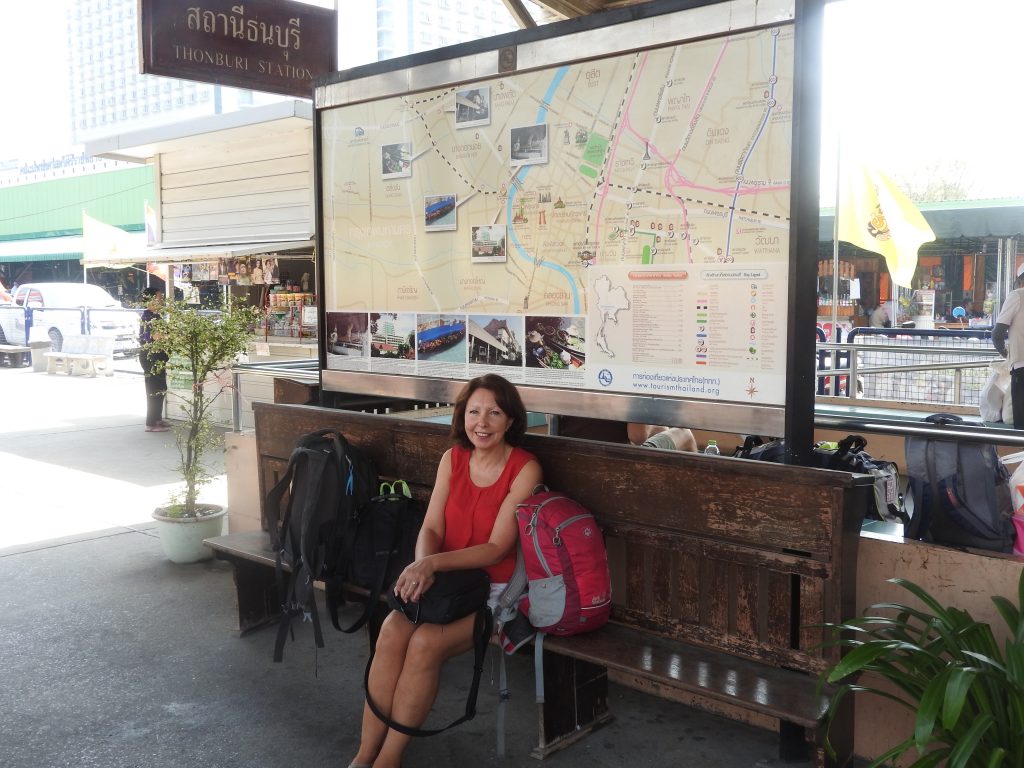
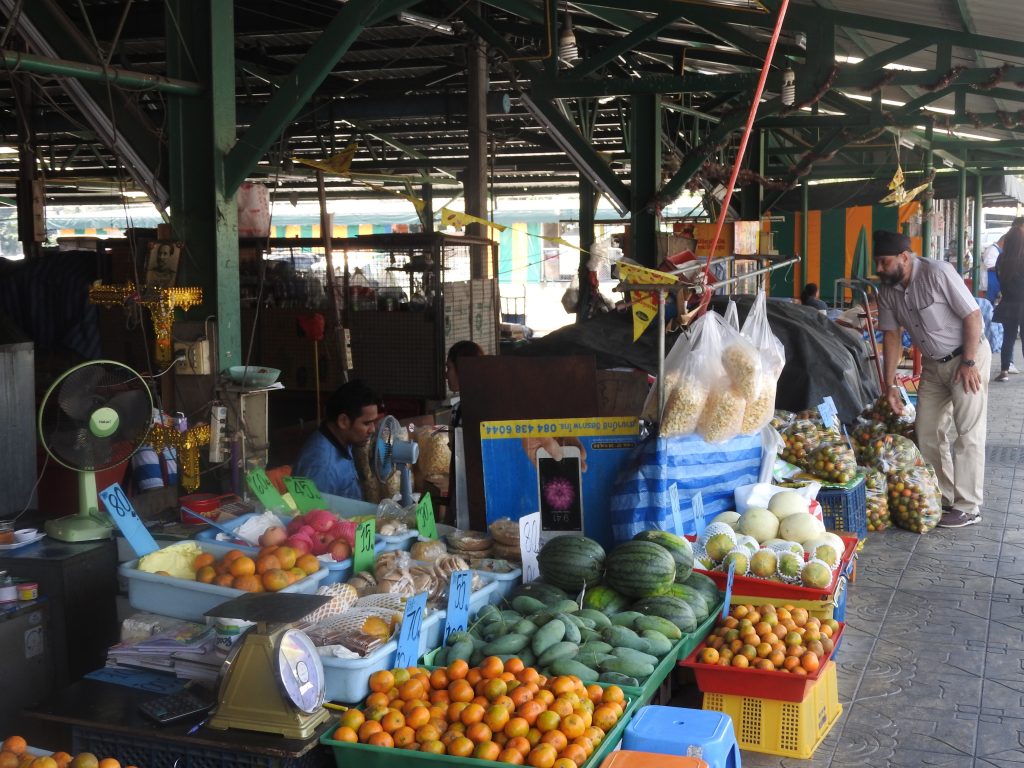
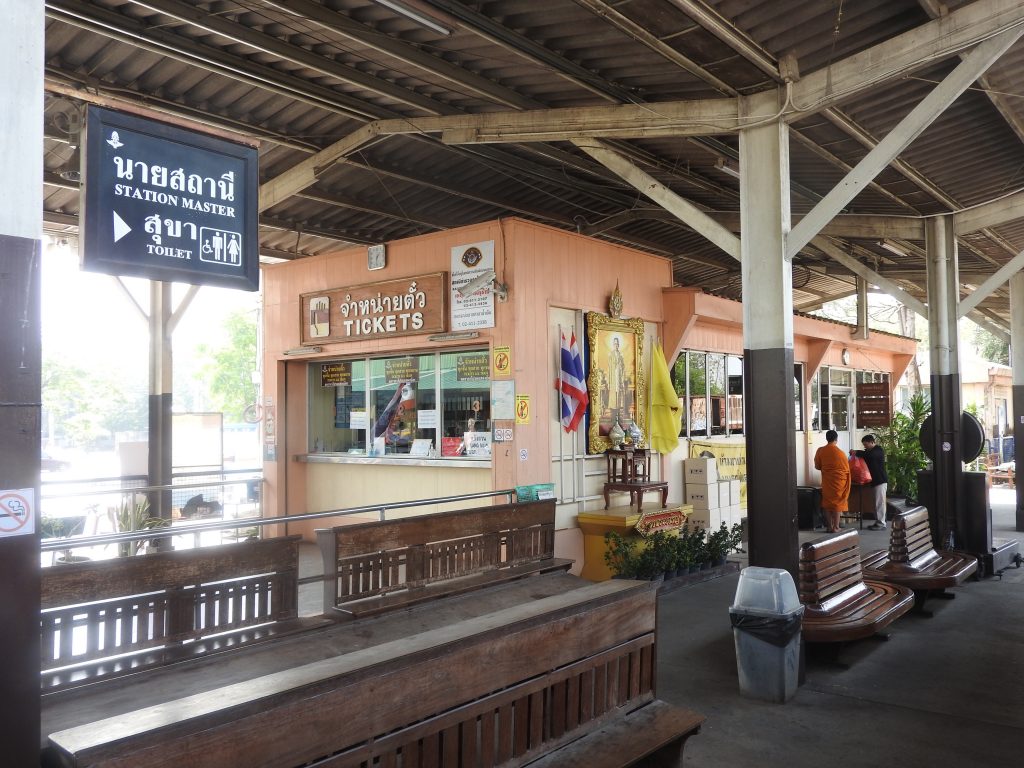
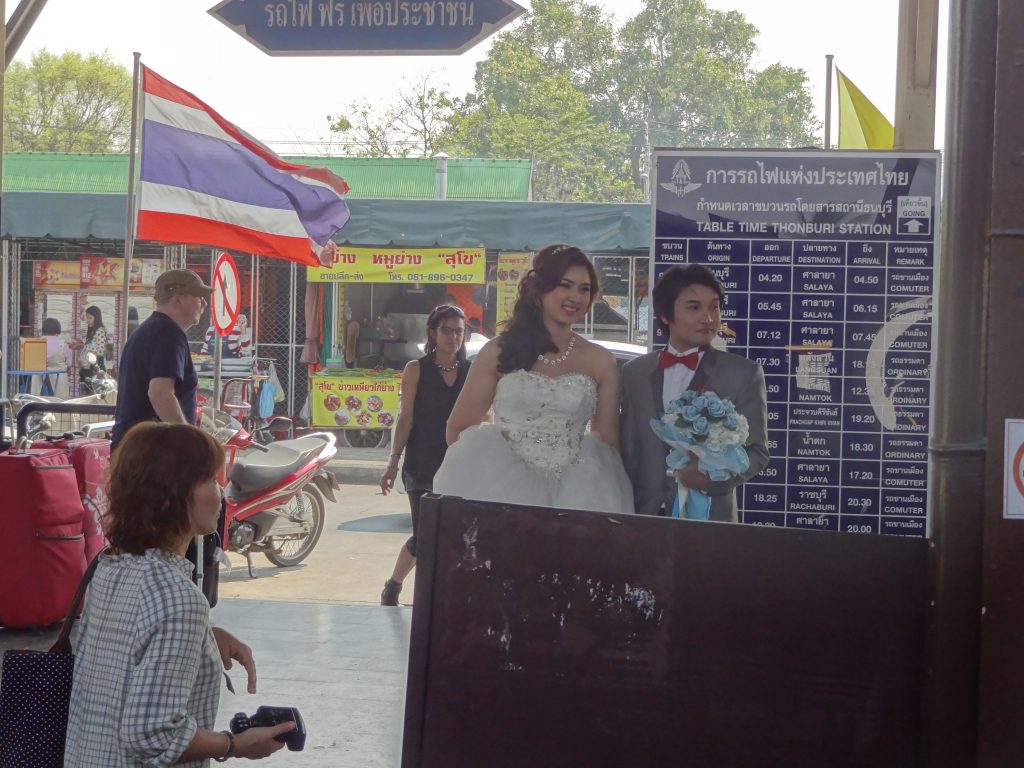

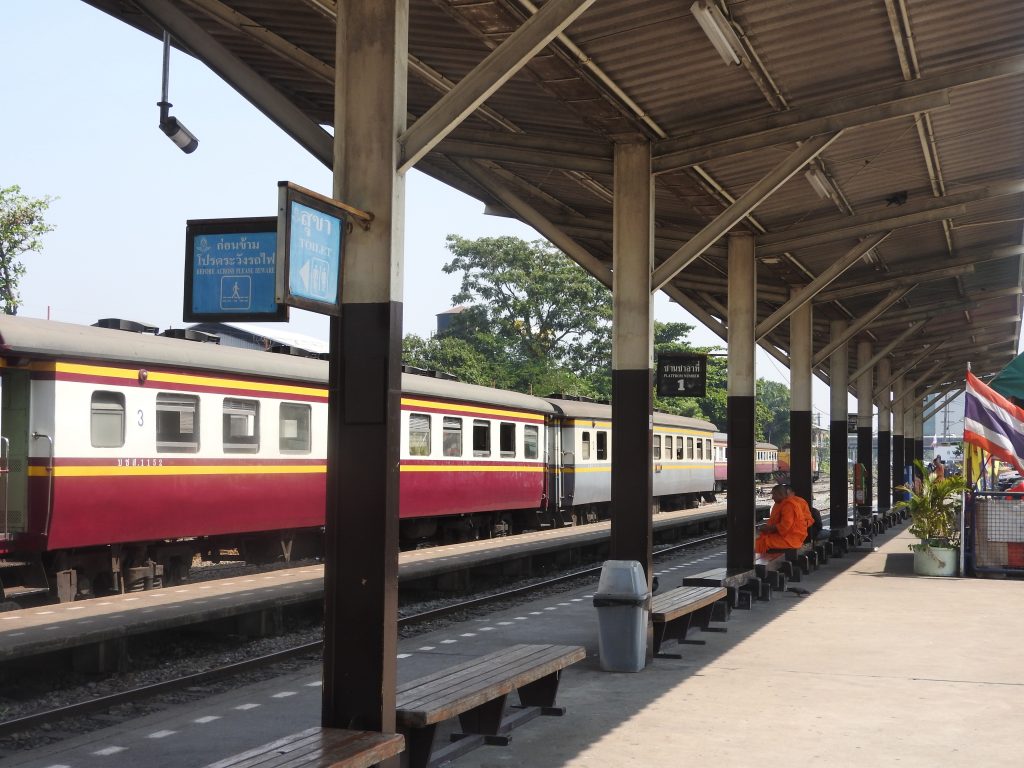
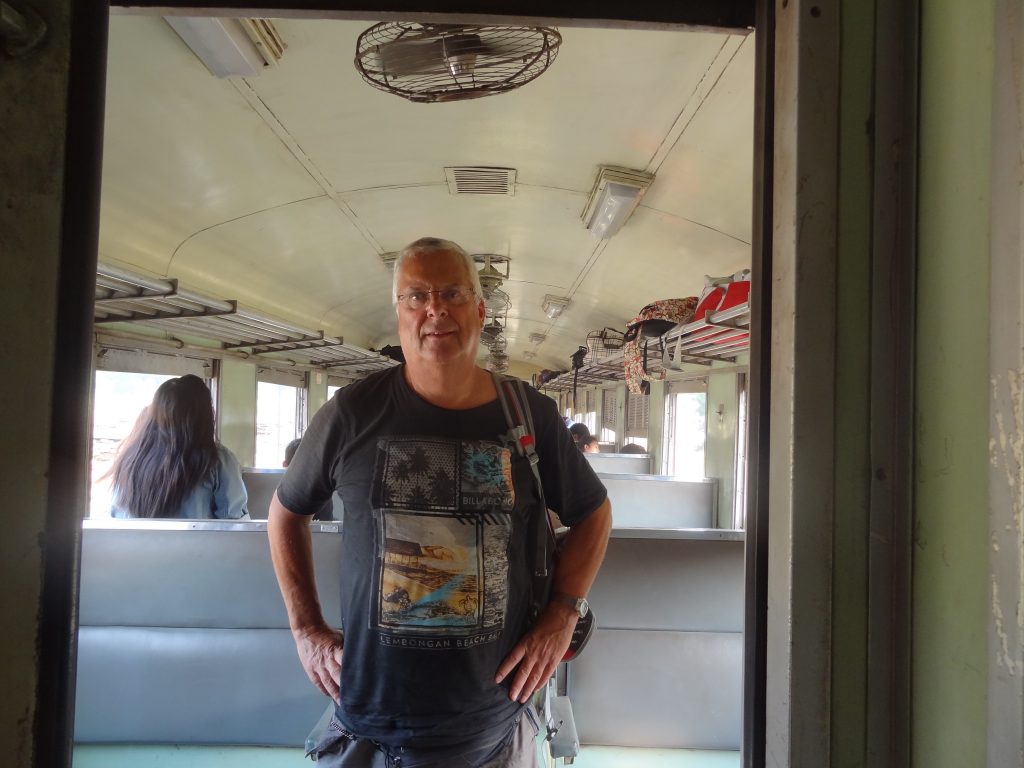
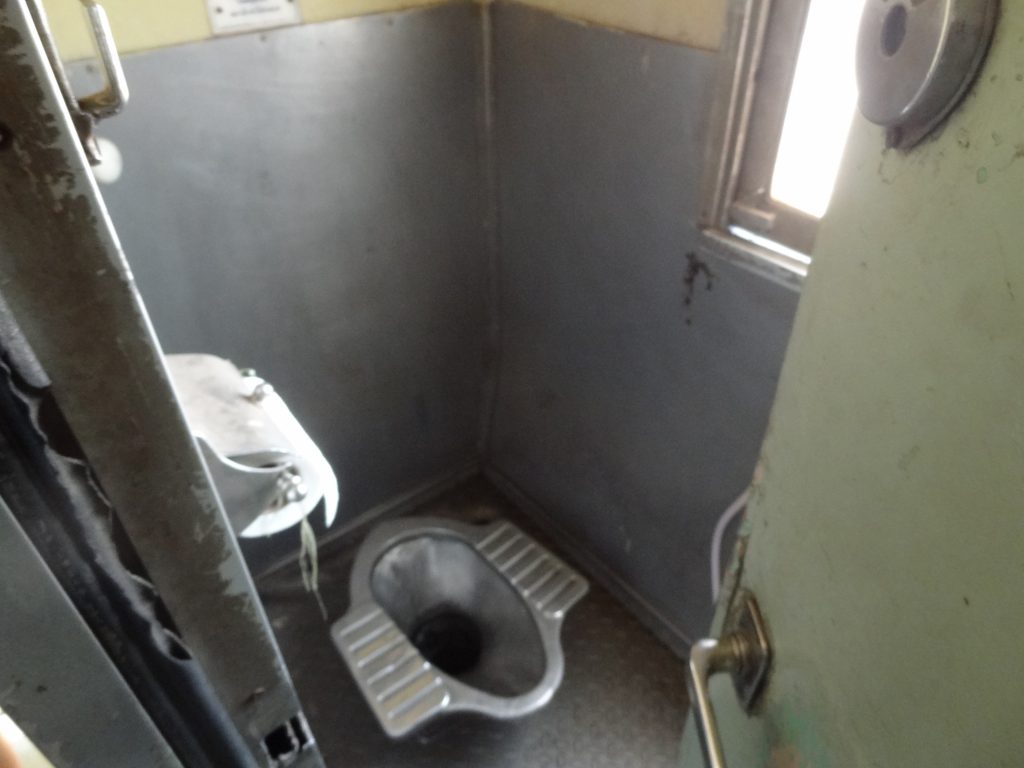
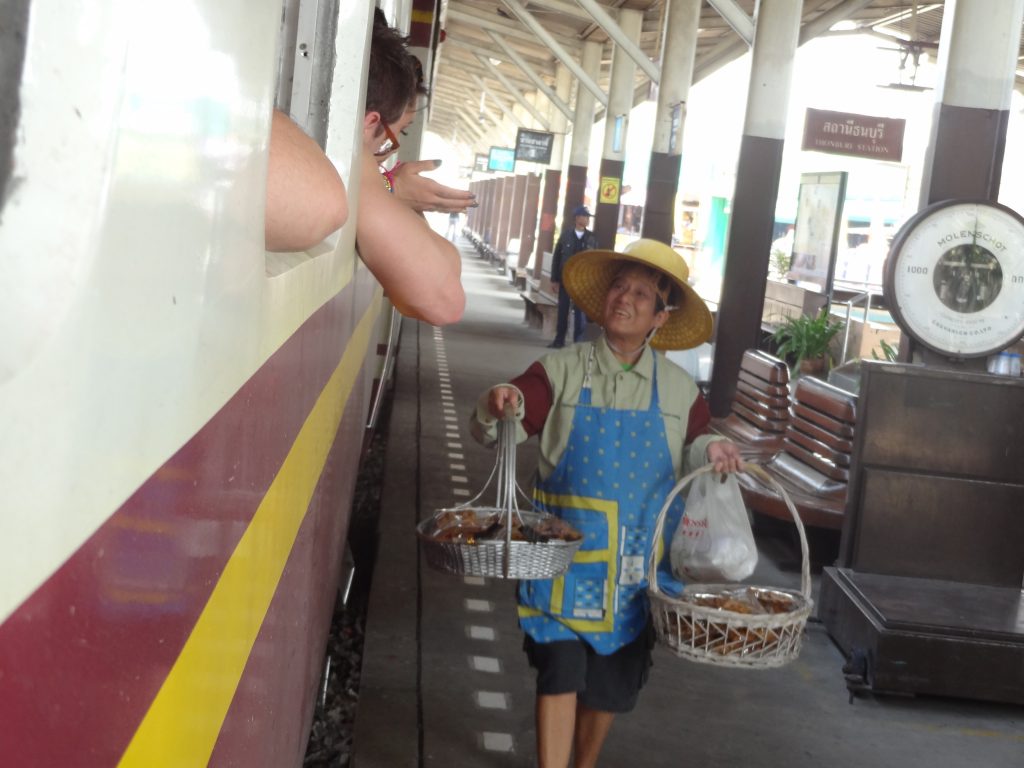
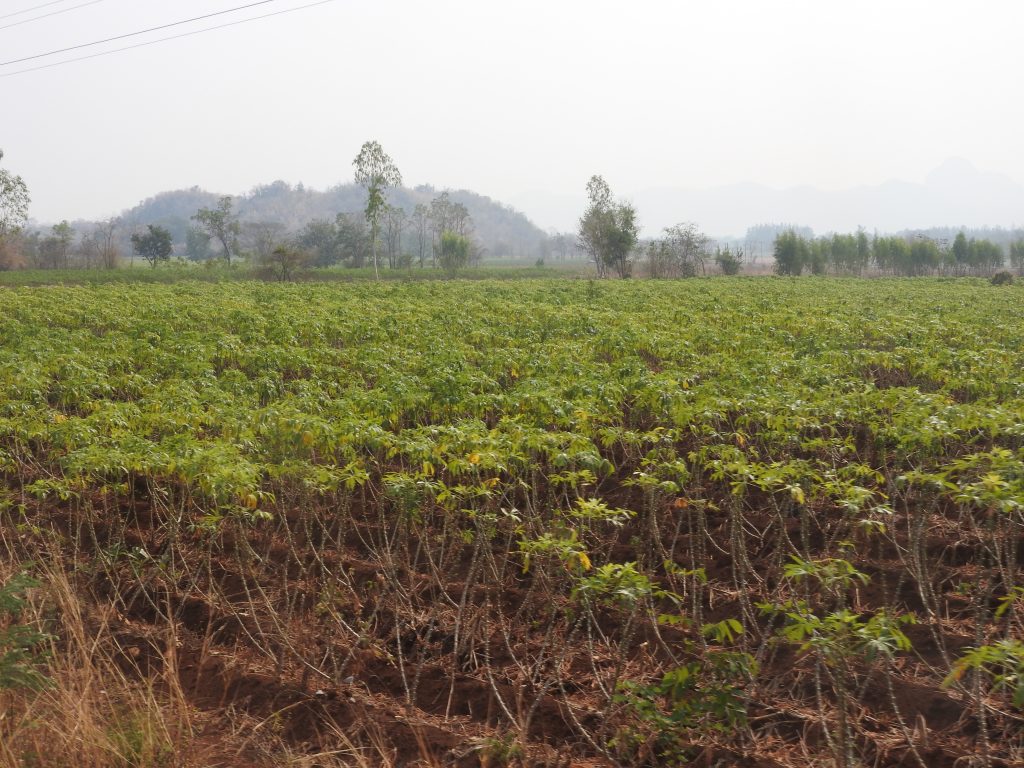
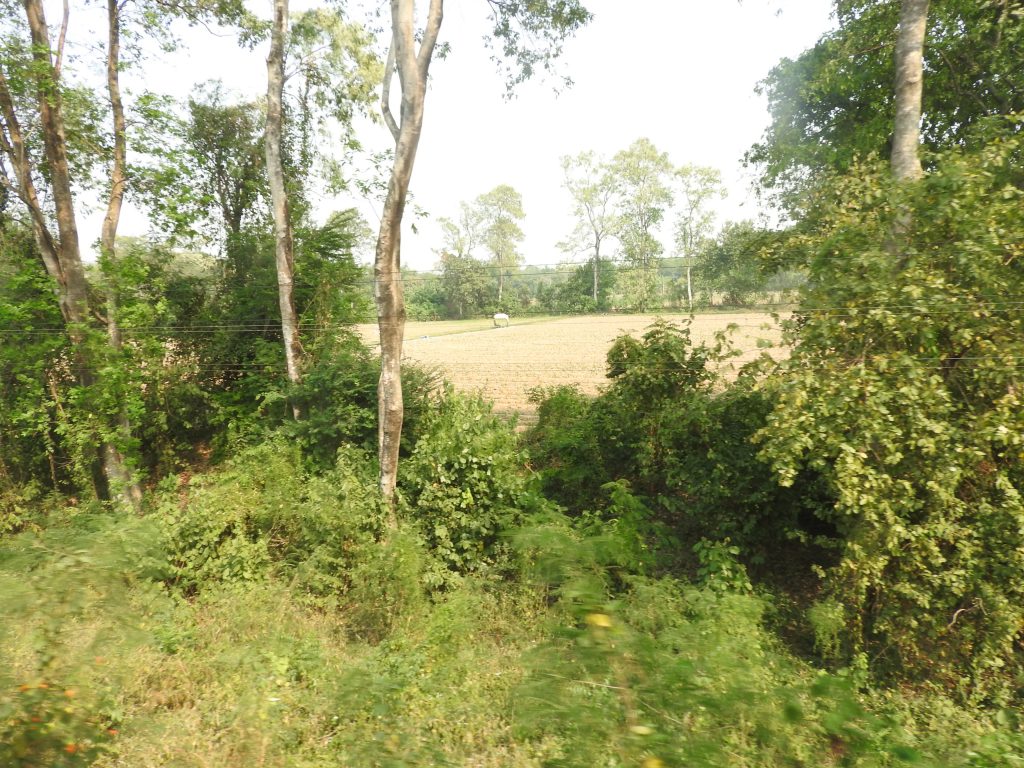
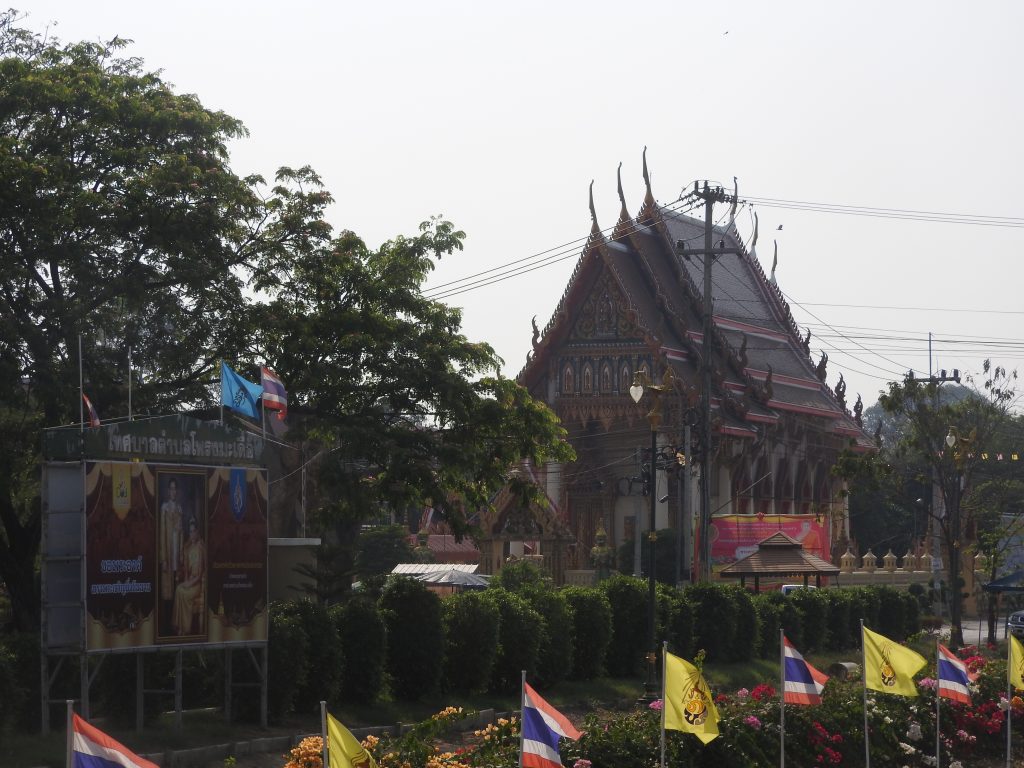
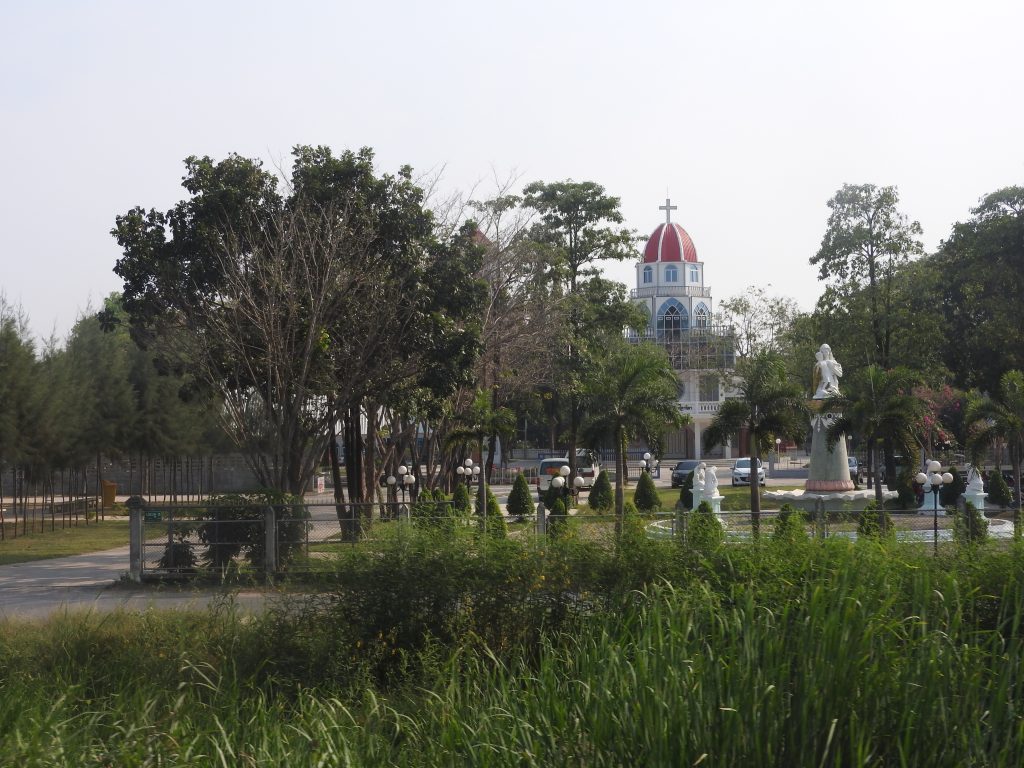
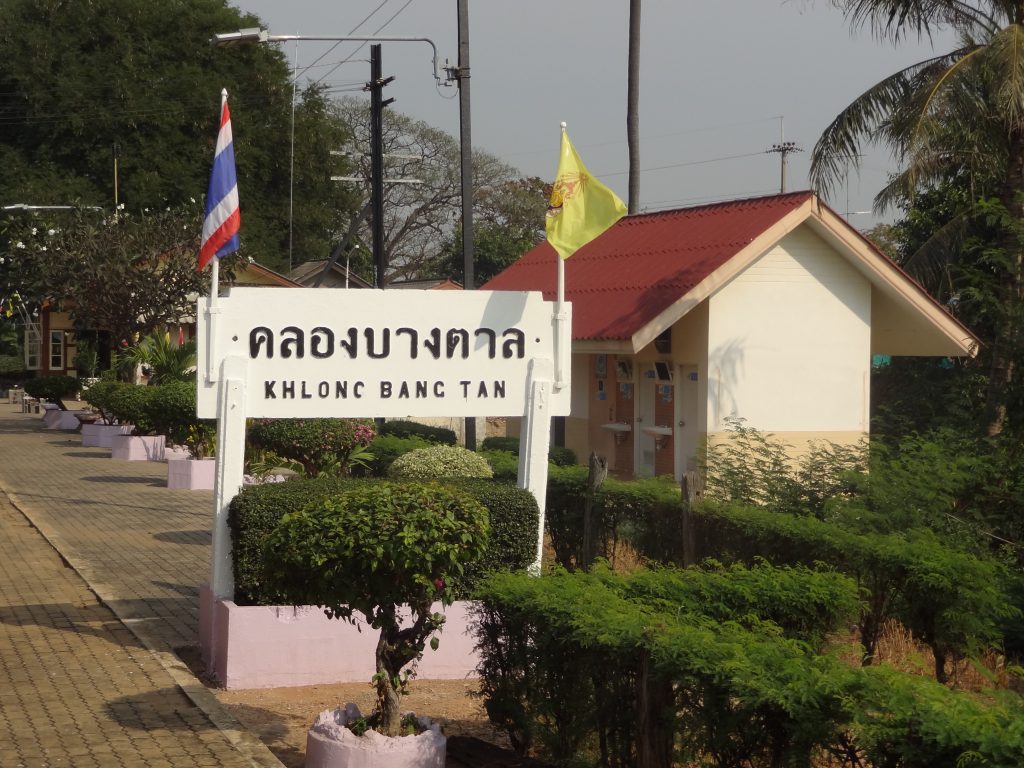
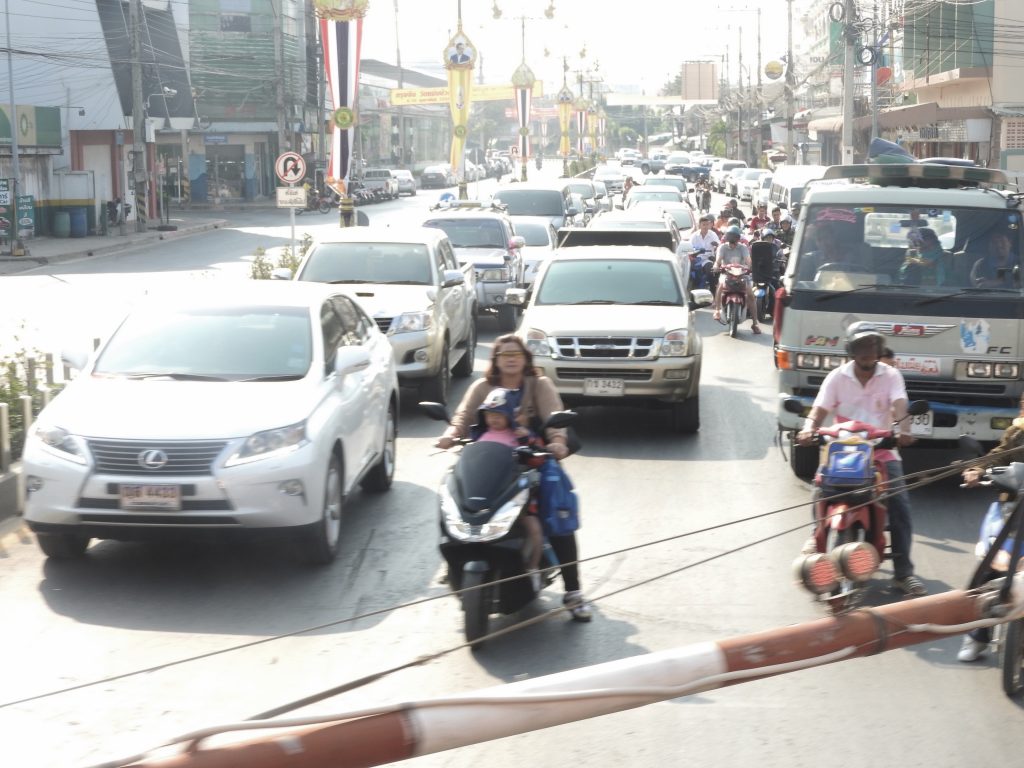
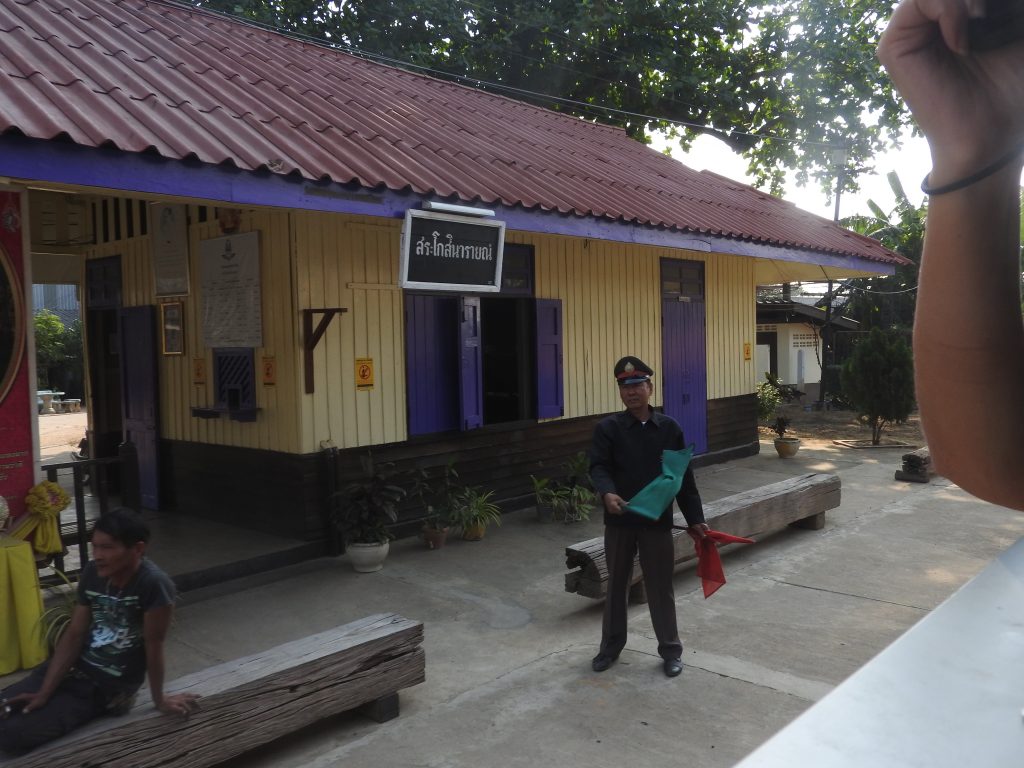
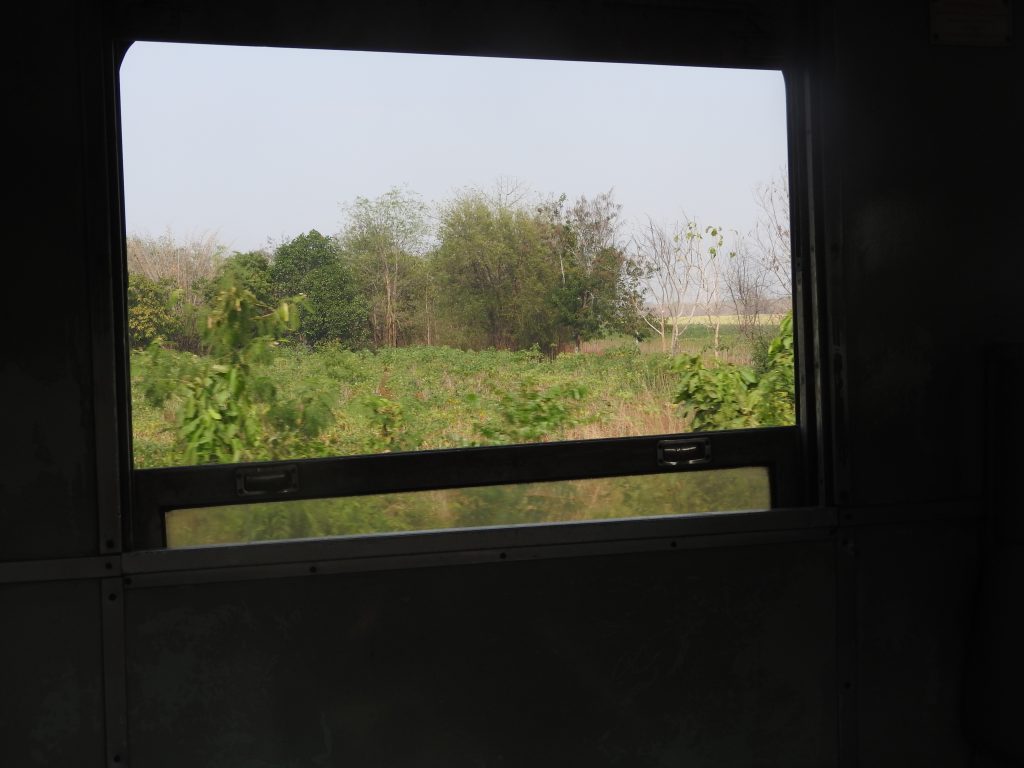
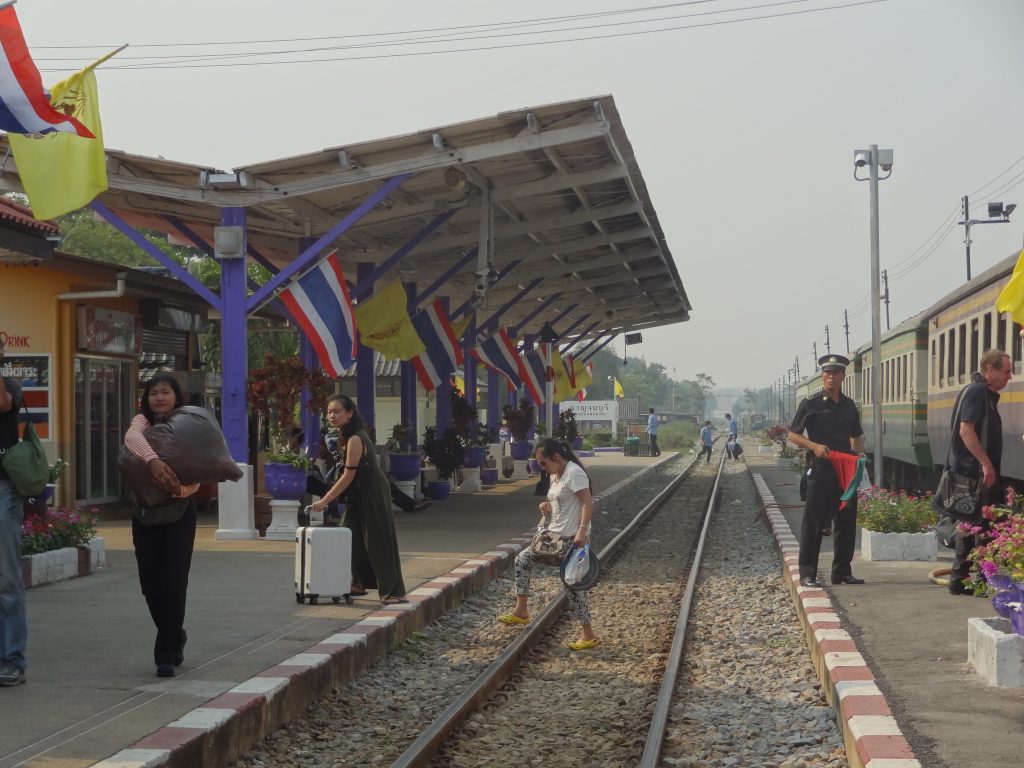
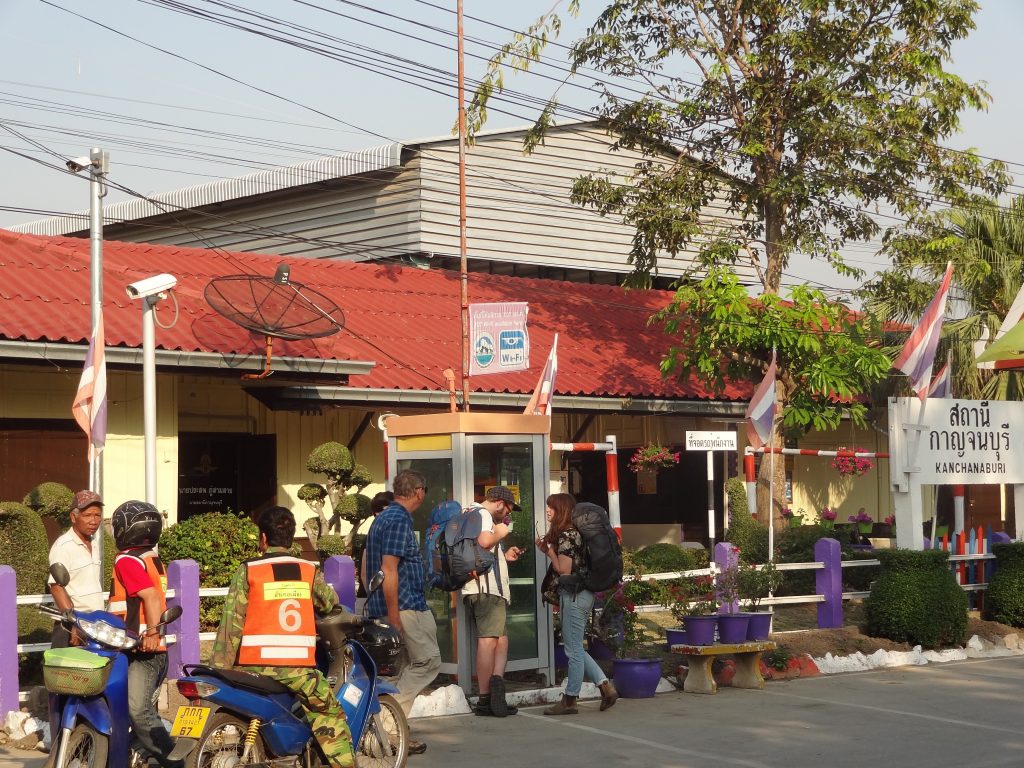
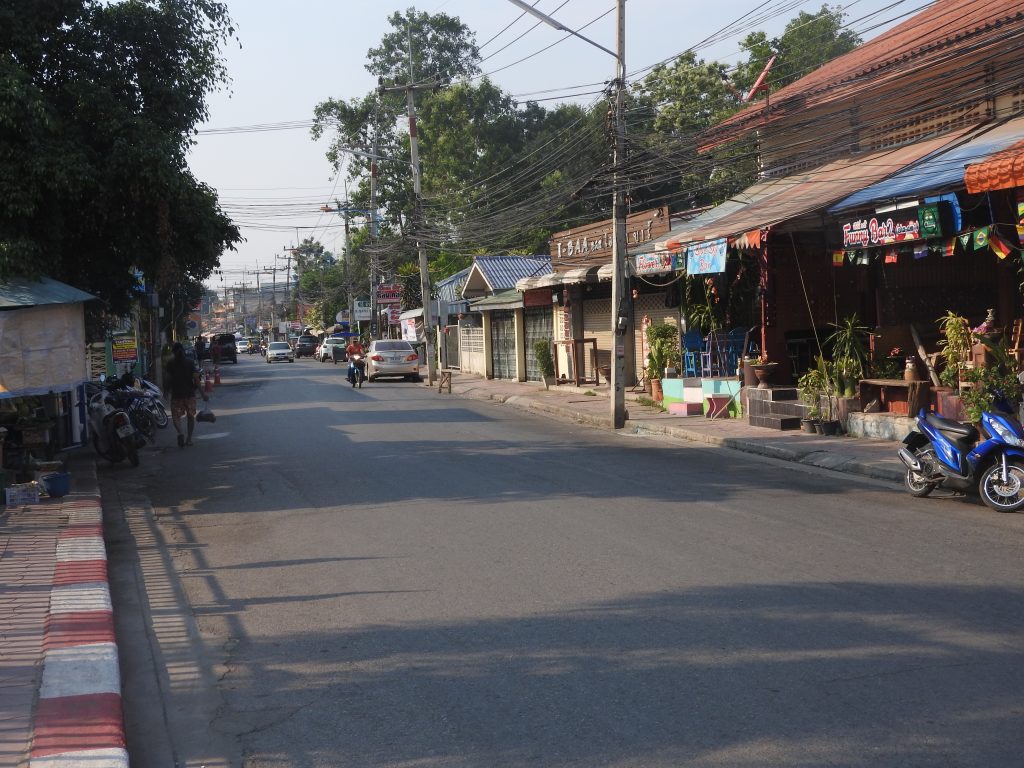
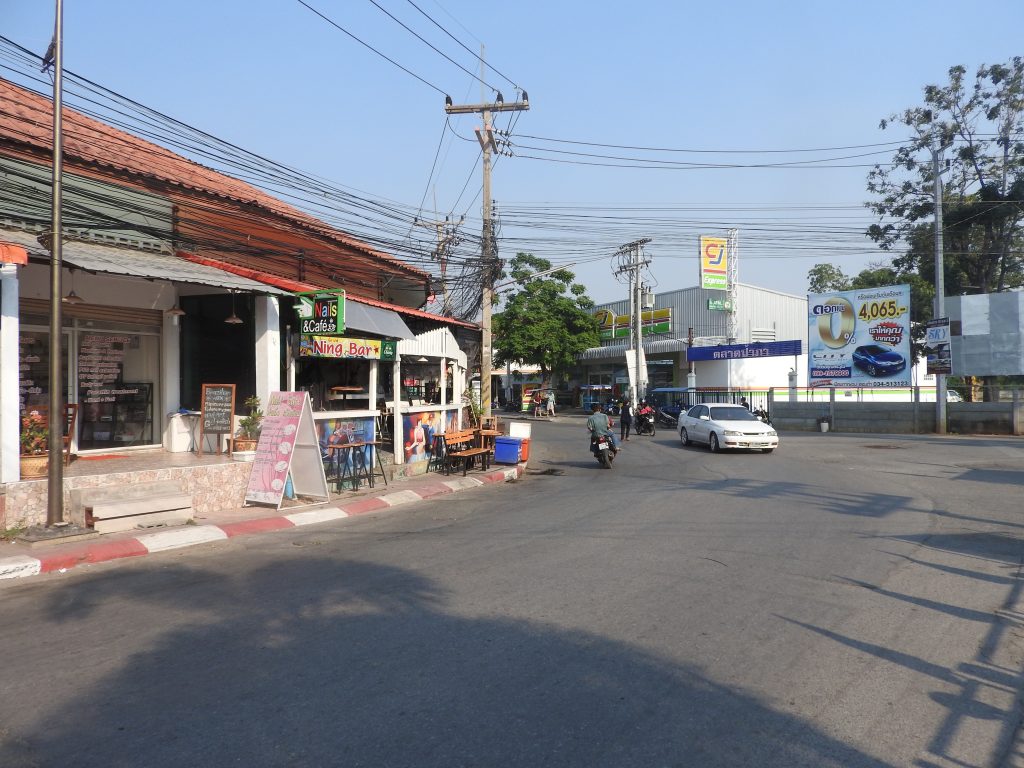
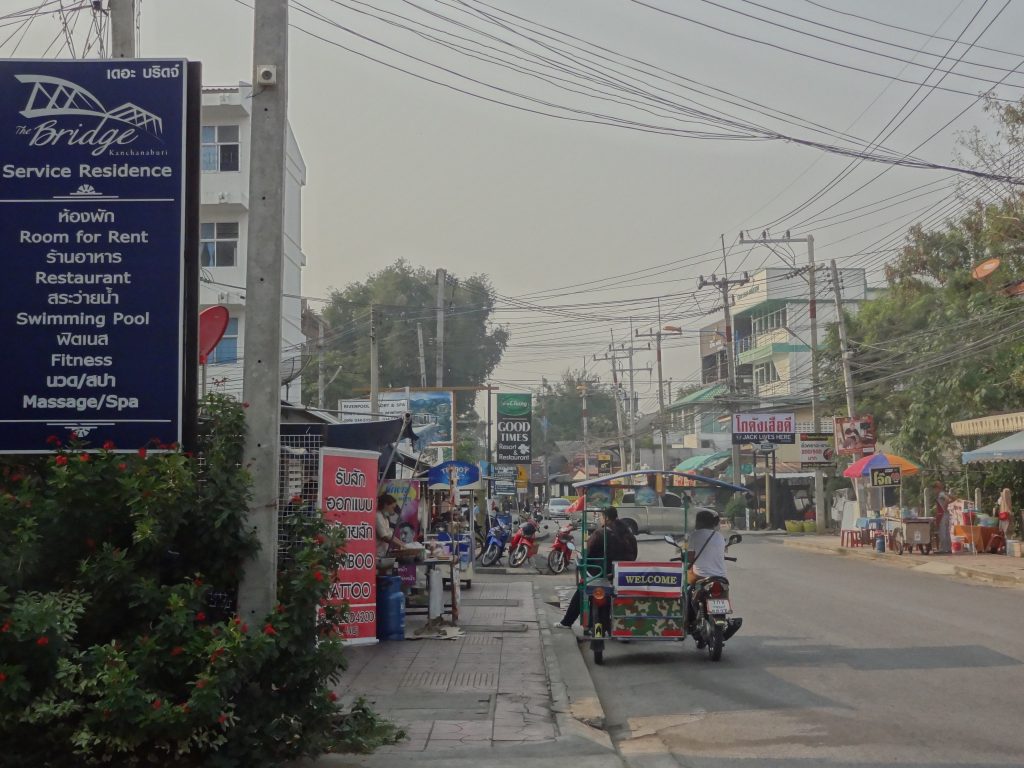
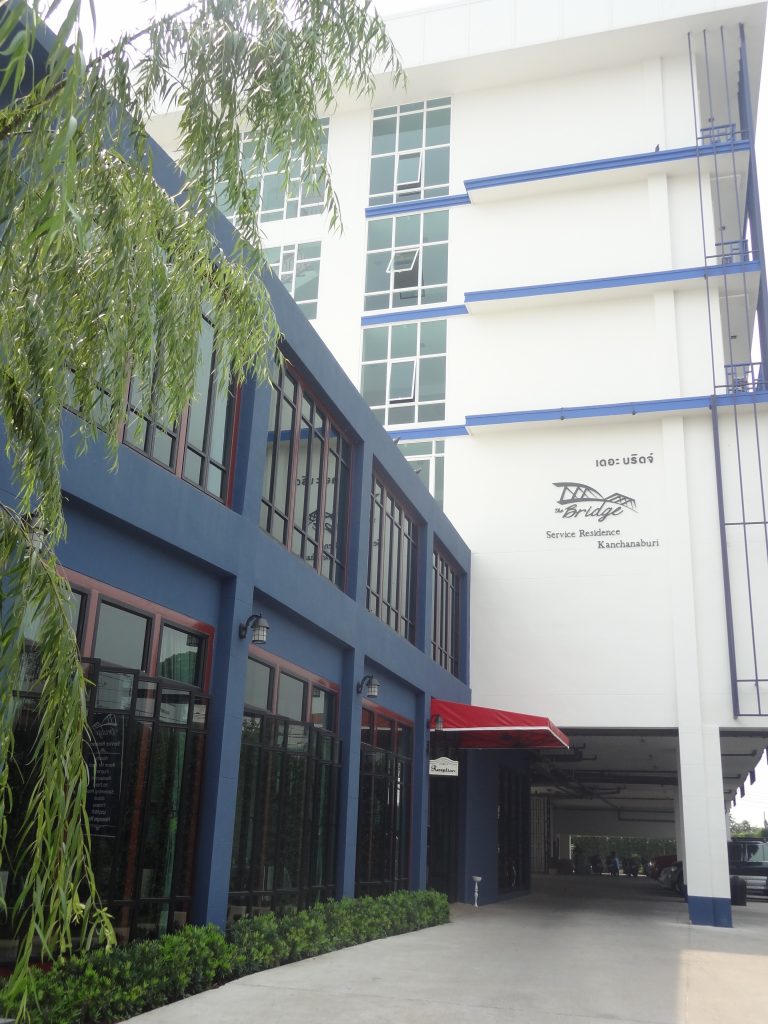
At Kanchanaburi we stayed at the almost new Bridge Residence on Mae Nam Kwai Rd and during our stay visited the famous Bridge over the River Kwai built by the Japanese using Prisoners of War and conscripted labour from Indonesia and other places in WWII. We also visited the mass graves of some of the POWs who died in the construction of the railway, museums commemorating the events of the time and stretches of the Death Railway where the total loss of life in horrendous conditions is estimated to be at over 100,000.
We had a very agreeable time at Kanchanaburi. The Mae Nam Kwai Rd area where most of the hotels restaurants etc are located is quite handy for the railway station but quite a distance from the town itself. The area has lots of ex-pats and is lively at night and probably a tad Wild West-ish at times. There are plenty of places to eat and drink, both local and western and plenty of massage places – we thought the town had a great vibe and not at all what we were expecting.
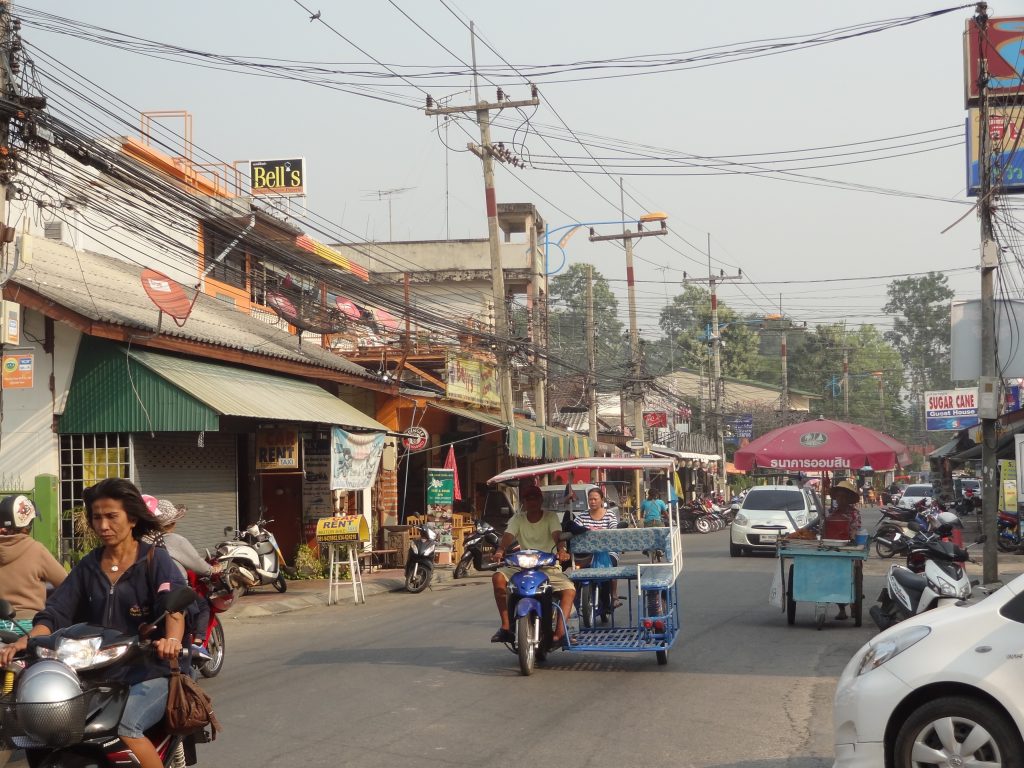
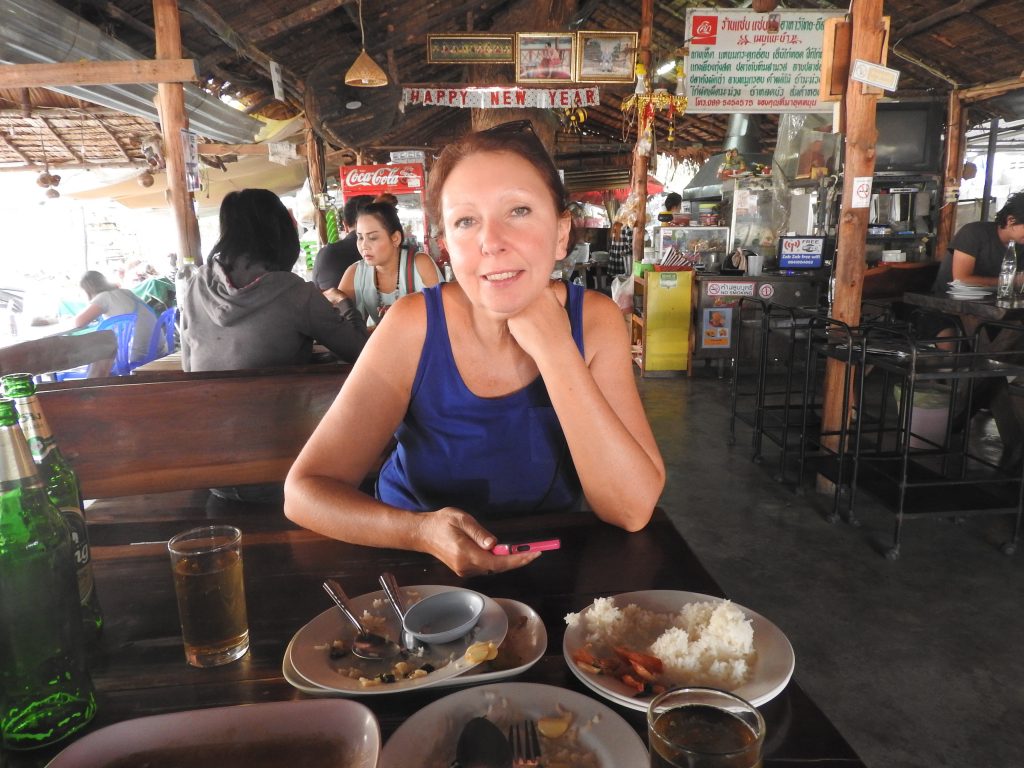
Death Railway Museum and War Museum Kanchanaburi
Most people, especially those of a certain age, will have seen the film and will know the story of the building of the Bridge on the River Kwai although the film makers used a lot of artistic licence in its making.
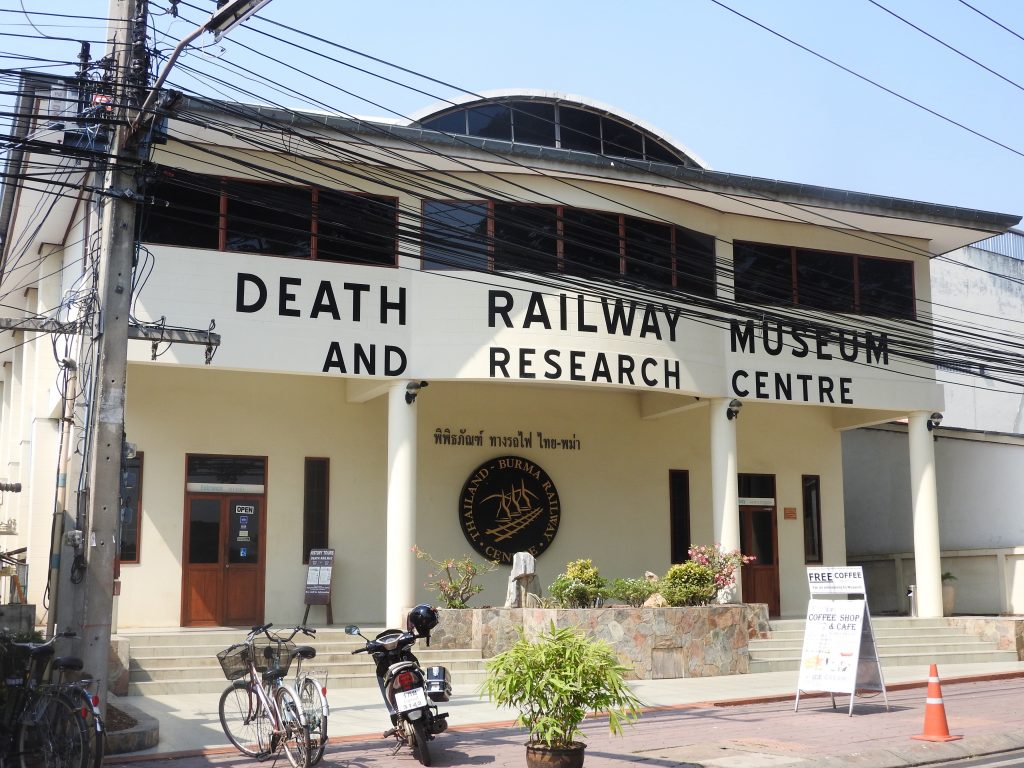
We are not big on museums generally but we couldn’t imagine visiting the area and not this museum and we thought it excellent with lots of exhibits both interesting and tragic – a very moving experience but a must visit. Going to this museum when first arriving is good prep for a visit to the Bridge and to Hellfire Pass.
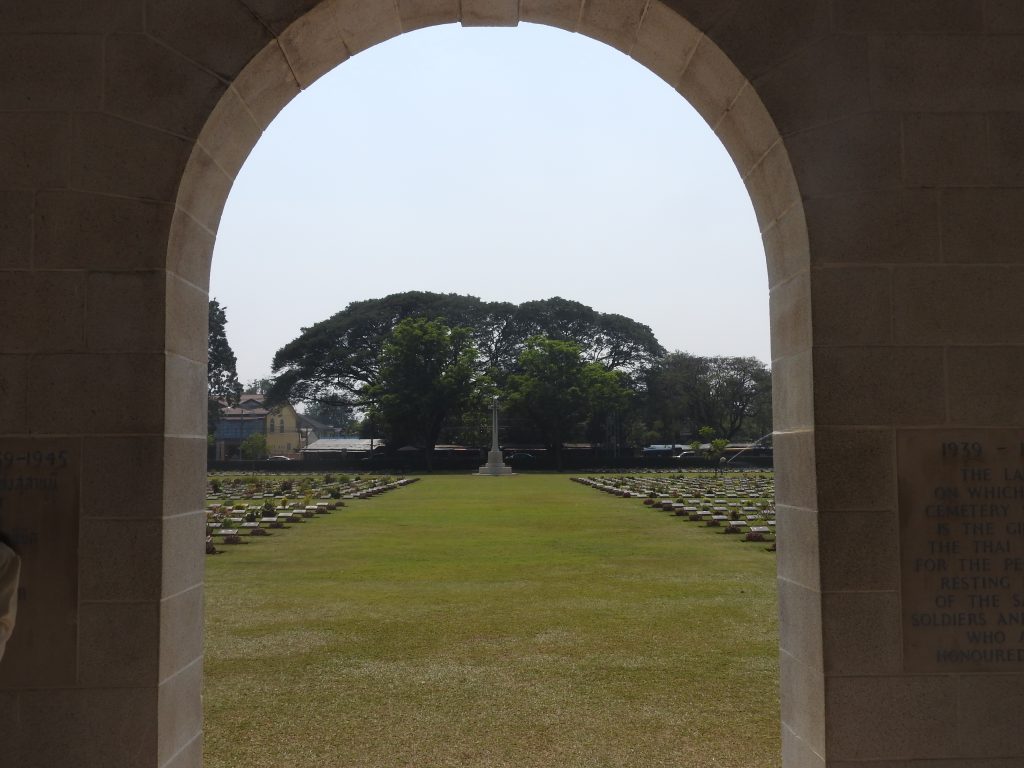
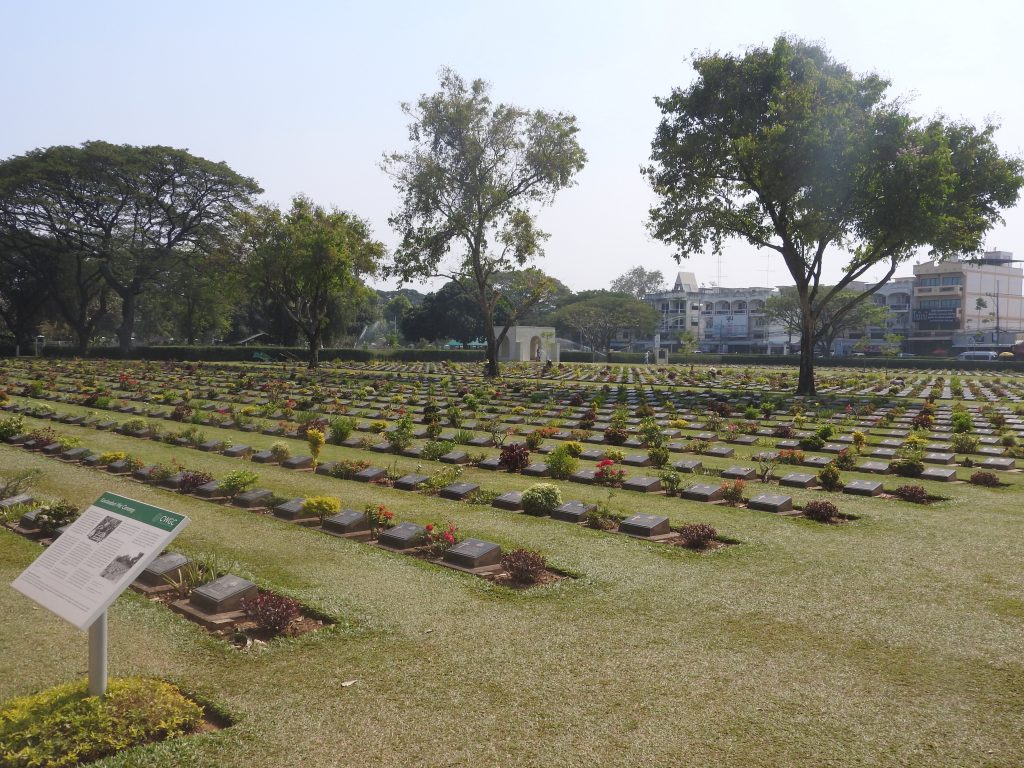
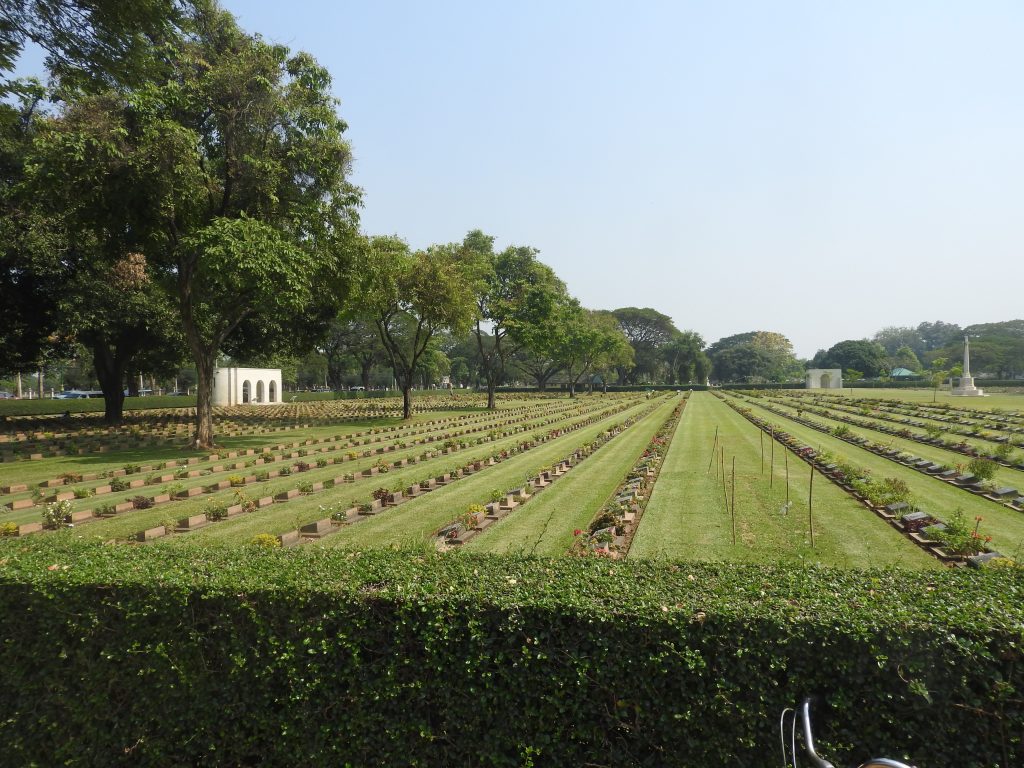
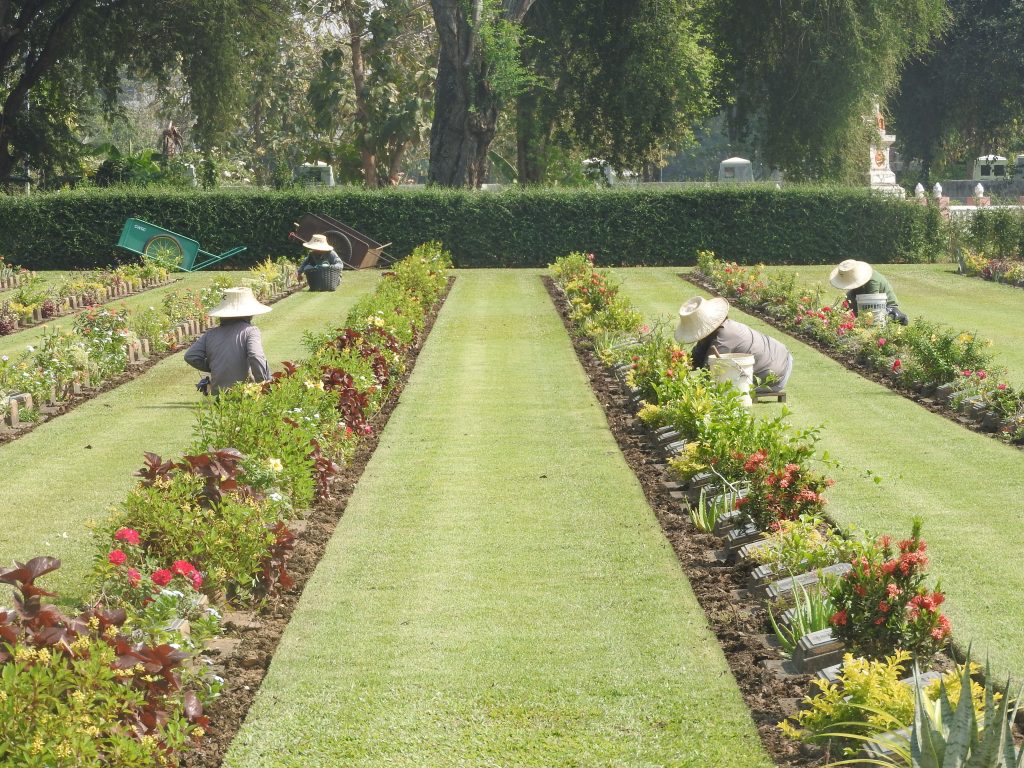

The cemetery is the main Prisoner of War Cemetery for some of the Commonwealth and Dutch POWs who died and were buried along the railway. The American fallen were repatriated to the USA but almost 7000 casualties are commemorated here and others lie in 3 cemeteries elsewhere in Thailand and one in Myanmar – the railway was built by two labour forces working from either end of the railway line in Siam ( Thailand) and Burma (Myanmar).
The cemetery is maintained in immaculate condition – to say the least. The graves, lawns, flowers and bushes are literally manicured!
The Bridge over the River Kwai
The Bridge was made famous by the film but its worth reading the true story – a brief summary is here
https://blog.findmypast.com/constructing-the-death-railway-the-real-story-behind-the-bridge-over-t-1406164155.html
This is one of Thailand’s most popular tourist attractions and as always there is a small army of people based near the bridge providing opportunities to buy refreshments and souvenirs of all kinds, though mostly tacky. There’s a walkway across the bridge even though the bridge is still used to convey a tourist railway.
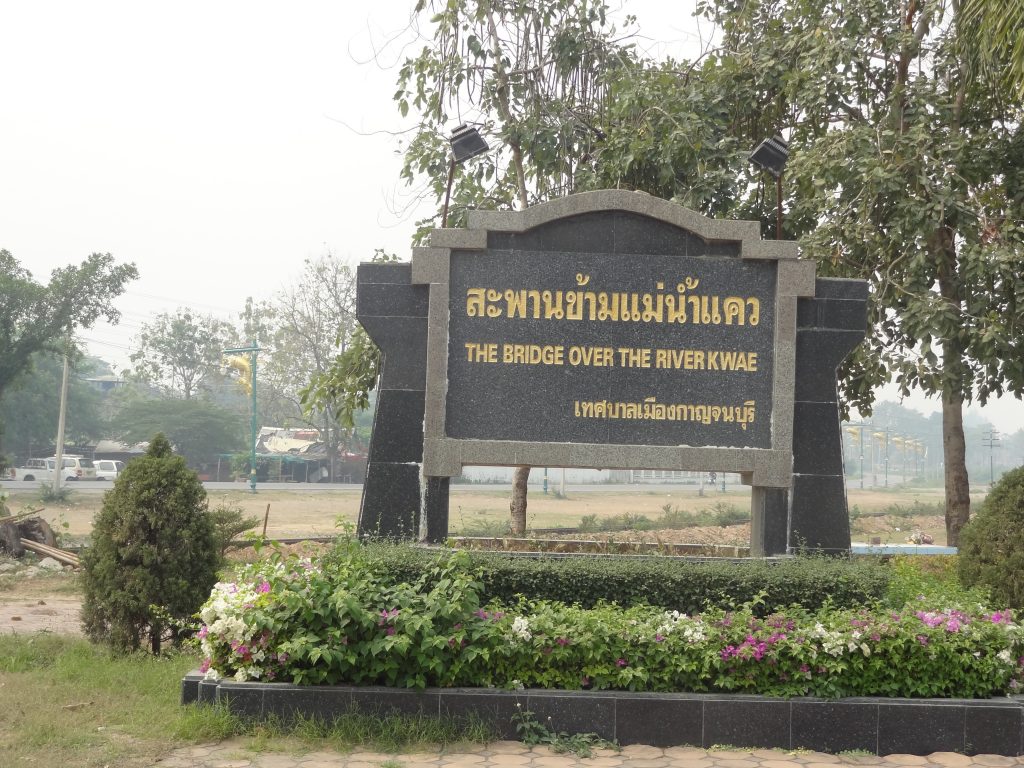

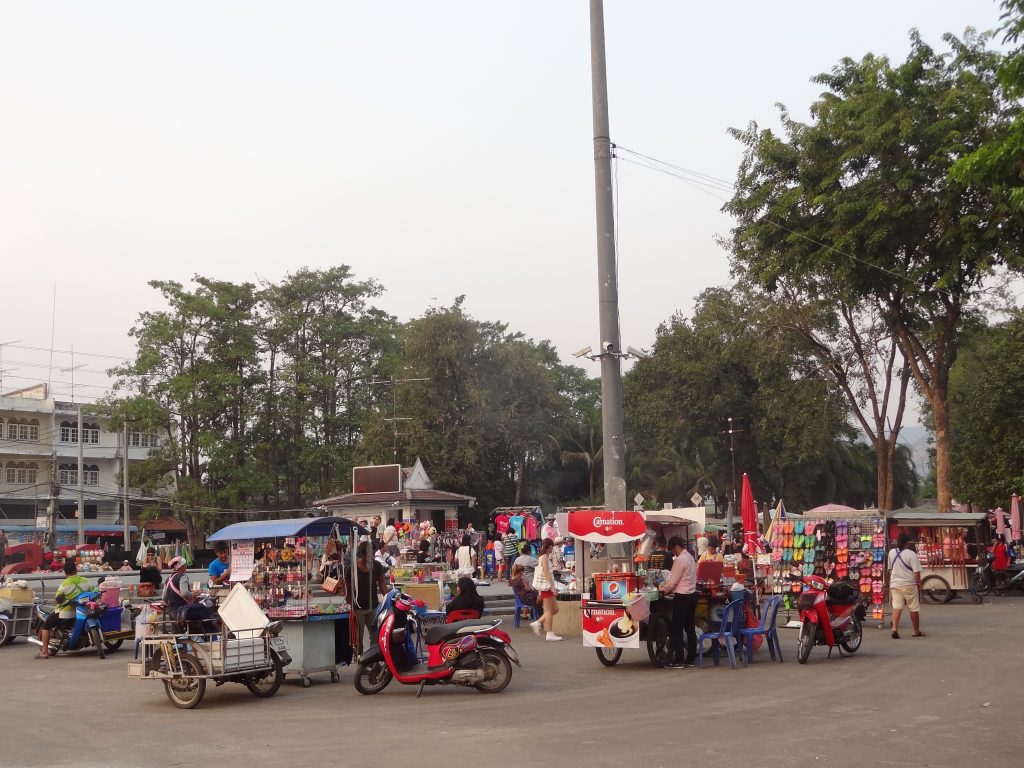

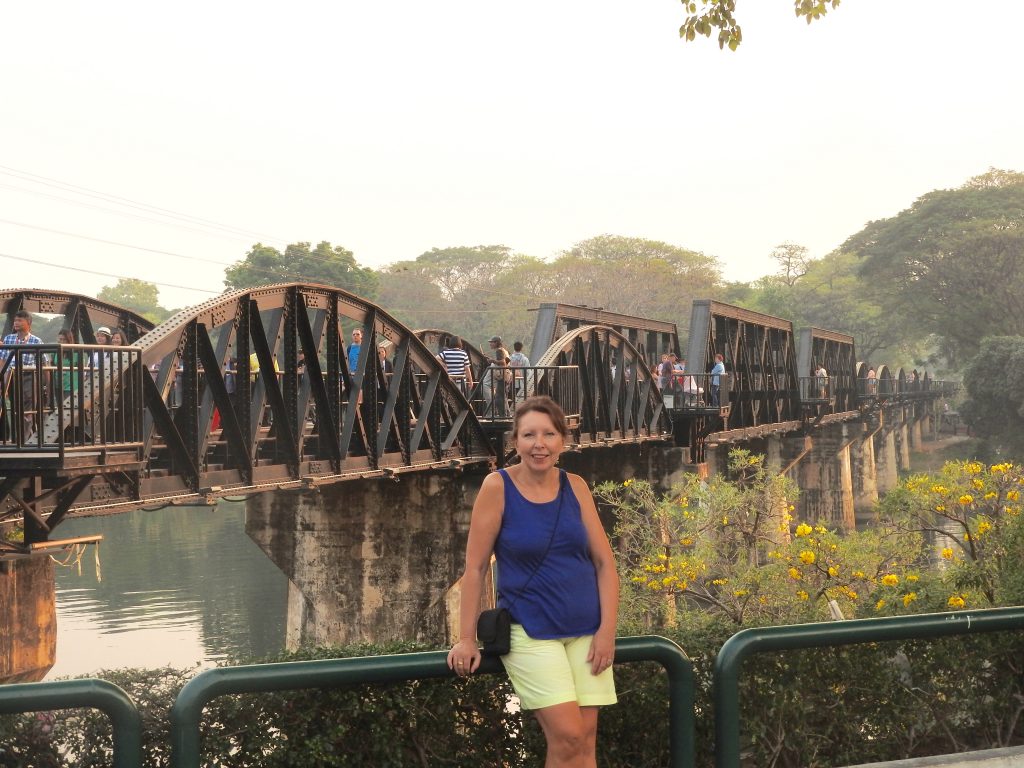
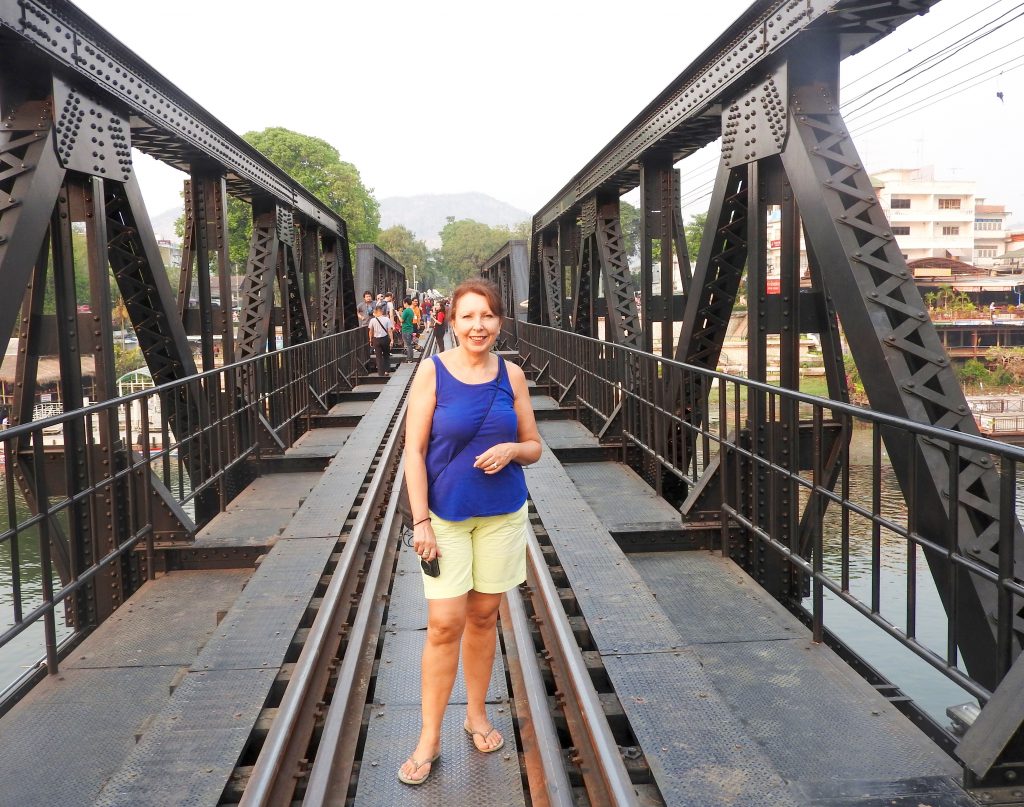




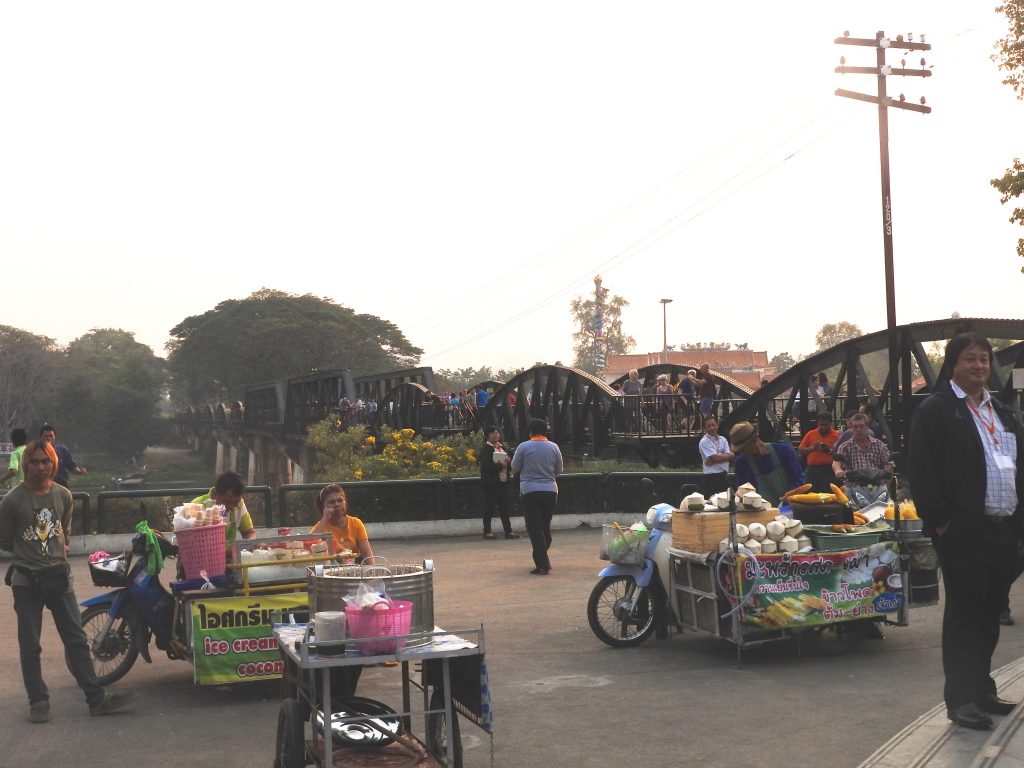


A Day Trip on the Death Railway and Hell Fire Pass
Hell Fire Pass was the name given to one particular stretch of the railway that was especially difficult to build requiring a deep cutting through solid rock in a remote area.
The pass is noted for the harsh conditions and heavy loss of life suffered by its labourers during construction. Hell Fire Pass is so called because the sight of emaciated prisoners labouring at night by torchlight was said to resemble a scene from hell.
Despite the huge loss of life suffered in its construction, the Thai-Burma railway was demolished after WWII although part of it on the Thai side was later reinstated as far as Nam Tok. Hell Fire Pass is beyond Nam Tok and so it’s necessary to get a train to Nam Tok and then a bus or taxi for the final stretch to HFP. In the event, the train we planned to catch from Kanchanaburi to Nam Tok was cancelled on the day we made the trip and so we hired a car and driver to take us. He drove us to HFP and waited whilst we went around the excellent museum and walked along the track. He then dropped us off at Nam Tok Station so that we could get a train back to Kanchanaburi. It all worked out pretty well; it was a long day but very very interesting and once again a very moving tour – there wasn’t a dry eye around the place.










The train journey from Nam Tok back to Kanchanaburi is a scenic one following the river for some distance and of course takes the route worked by the POWs back in World War II clinging to the hillsides in places.










On 12th February we caught a lunch time train back to Bangkok for another night at the Red Planet Hotel before we left on our next trip the next day to Hua Hin.